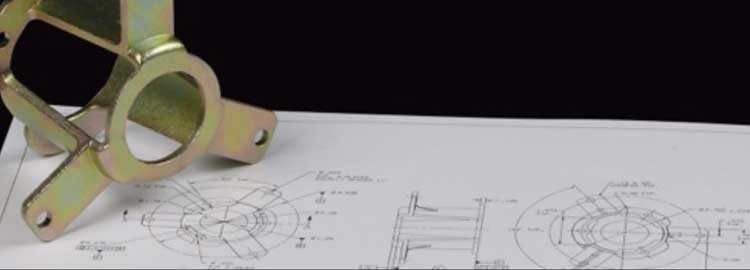A-2 Forged Parts
Custom Industrials Company's (CIC) specializes in A-2 forged parts.
Closed Die Forgings
Closed die forging, also known as impression forging, utilizes pressure to compress the A-2 forged parts piece to fill an enclosed die impression. A medium frequency induction heating furnace or gas furnace is used to heat the metal to get the desired A-2 forged parts shapes. As the dies press together, the material is forced to fill the impressions, and the excess metal (flash) is squeezed out. Die forging is the best method to meet tolerances, and results in finished parts that are completely filled and produced with the least amount of flashing.
There are two main types of closed die forgings.
Hammer Forgings
Hammer forging is the most common forging for A-2 forged parts individual forgings. In this method, the A-2 forged parts is shaped by an instantaneous application of pressure to a relatively small area. A hammer or ram delivers intermittent blows to the forged section, applying the necessary pressure. Multiple blows with different die shapes are typically used in succession to form A-2 forged parts in order to produce complex shapes. The hammers used are typically dropped from its maximum height, and usually raised by steam or air pressure.

Hammer forging can produce A-2 forged parts in a variety of shapes and sizes, and if sufficiently reduced, it can simultaneously create a high degree of grain refinement. However, hammer forgings typically require tooling or dies to produce anything other than a simple shape such as a round or square forms.
Press Forgings
Somewhat less common is Press Forging is similar to kneading in which a slow and continuous pressure is applied to the forged area. The pressure extends deep into the material, and this process can be done cold or hot. Cold press forging is used on thin, annealed A-2 forged parts, while hot press forging is used on large work such as armor plating, locomotives, and heavy machinery. Press forging offers economic advantages as closer tolerances can be obtained thus less secondary work is needed to produce a finished part to proper tolerances. This method can also be used to create larger A-2 forged parts forgings.
Open Die VS Closed Die
Open die forging involves the shaping of heated metal parts between a top die attached to a ram and a bottom die attached to a hammer, anvil or bolster. Metal parts are worked at their appropriate temperatures, ranging from 500°F to 2400°F, and gradually shaped into the desired A-2 forged parts configuration through the skillful hammering or pressing of the workpiece.
The difference between open die forging and closed die forging is while impression or closed die forging confines the metal in closed dies, open die forging is distinguished by the fact that the metal is never completely confined or restrained in the dies. Most open die forgings are produced on flat dies. However, round swaging dies, V-dies, mandrels, pins and loose tools are also used depending on the desired part configuration and its size.
Although the open die forging process is often associated with larger, simpler-shaped parts such as bars, blanks, rings, hollows or spindles, in fact it can be considered the ultimate option in "custom-designed" metal components including A-2 forged parts. High-strength, long-life parts optimized in terms of both mechanical properties and structural integrity are today produced in sizes that range from a few pounds to hundreds of tons in weight. In addition, advanced forge shops now offer shapes that were never before thought capable of being produced by the open die forging process.
Open-die forging offers better fatigue resistance and improved microstructure, continuous grain flow and fine grain size, increased strength, less material waste, reduced chance of voids, and cost savings. Closed-die forging offers better surface finish, no material limitation, is economic for large product runs, allows tighter tolerances and net A-2 forged parts shapes to be achieved, and the internal grain structure formation increases the product's tightness and strength.
Finish Machining
Finish machining often accompanies all types of A-2 forged parts, as close dimensional tolerances cannot be obtained with many of the forging processes.
In addition to A-2 forged parts we also provide castings, metal forming, plastics & rubber, and other industrial solutions.
Your A-2 forged parts Solution:
Custom Industrials Company (CIC) is able to handle all your A-2 forged parts needs.
We are focused on delivering quality A-2 forged parts and customized manufacturing parts or products, which comprise of Metal and Plastic components.
Contact us for your no cost A-2 forged parts consultation now.
